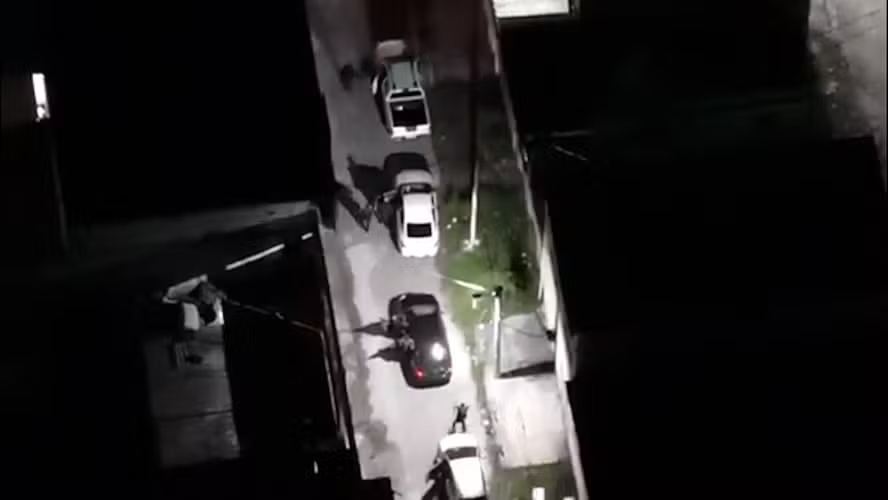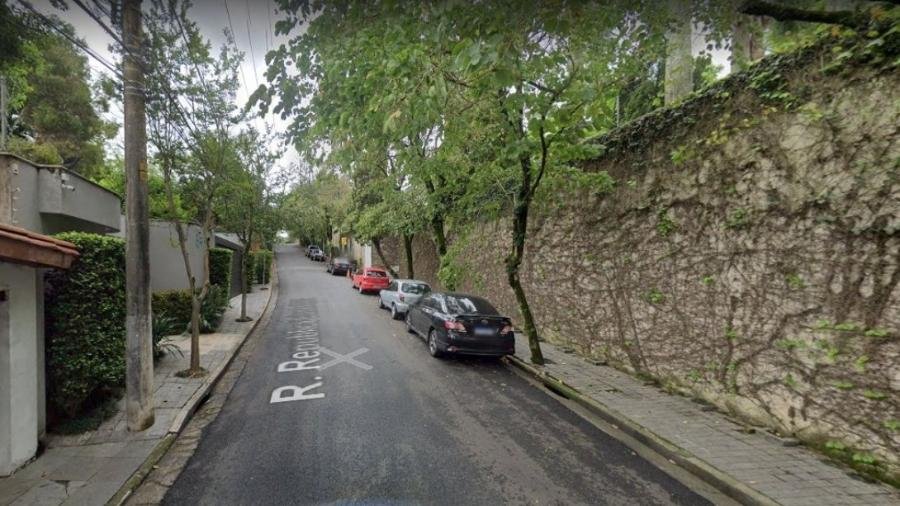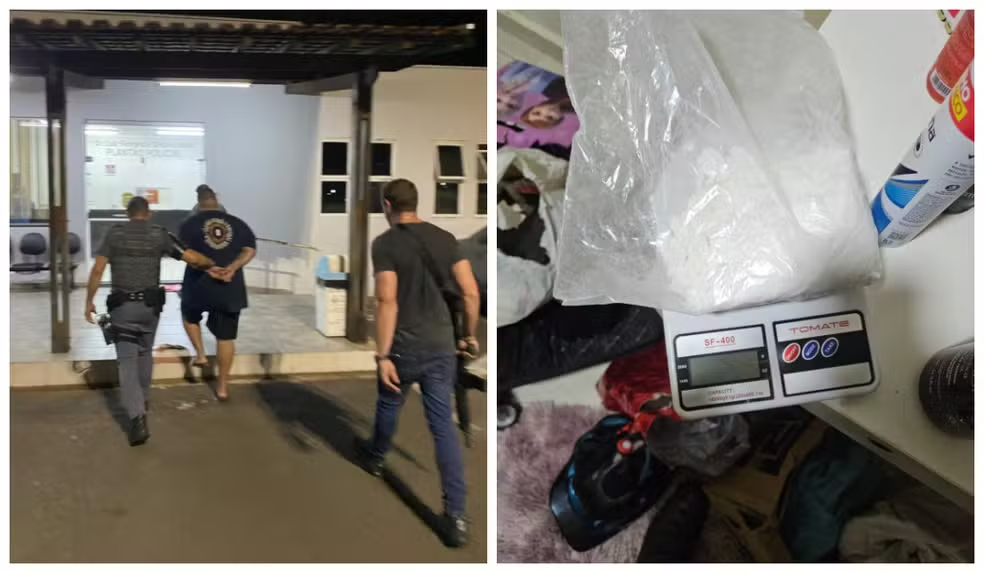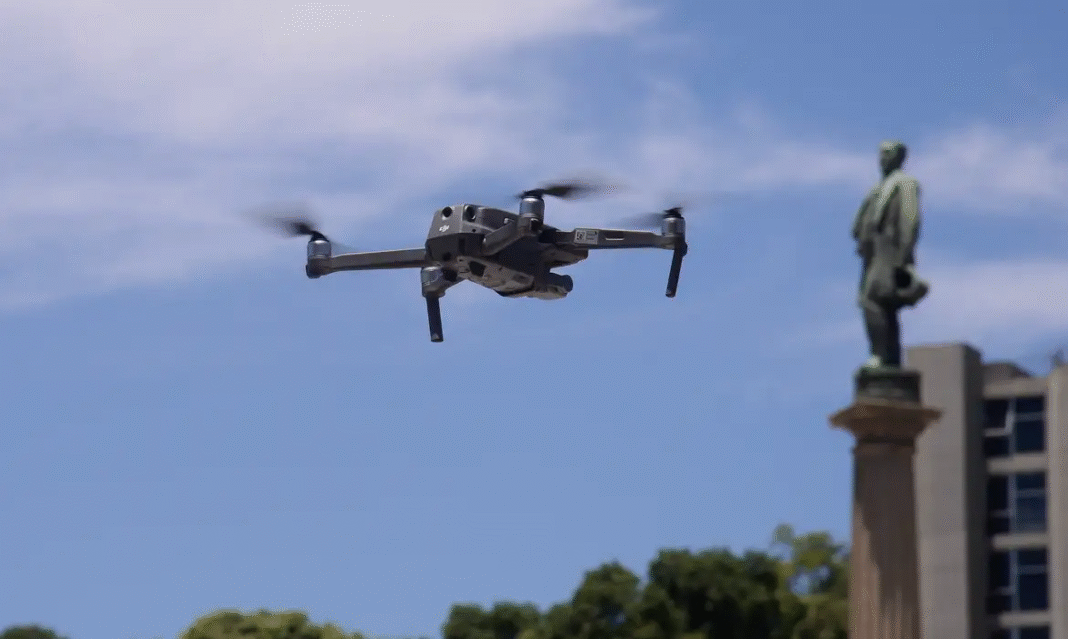SUMMARY
Once seen as little more than recreational gadgets, personal unmanned aerial vehicles—commonly known as drones—have rapidly evolved into powerful tools with a wide range of applications. Easy to operate, increasingly affordable, and widely available, drones have become popular among hobbyists, businesses, and even public agencies. In Brazil, their presence in the skies has grown substantially in recent years, with uses ranging from aerial photography and logistics to traffic monitoring and public security operations.
However, this technological boom has also introduced a new layer of complexity to the security landscape. As regulations struggle to keep pace with innovation, drones have opened opportunities not only for productivity and efficiency but also for disruption and criminal misuse, sometimes inspired by the use of drones as arms in wartime situations. Their ability to fly undetected, capture high-definition video, and access hard-to-reach areas has made them attractive to criminal organizations seeking to monitor police activity, plan thefts, invade private spaces, and even launch gang attacks.
This Content Is Only For Subscribers
To unlock this content, subscribe to INTERLIRA Reports.
The result is a growing tension between the benefits and risks of drone use. While some state governments are incorporating drones into public security strategies—with promising results, criminal groups are adapting just as quickly, using the same technology for illicit purposes. In this context, Brazil is now faced with a new and increasingly urgent challenge: how to harness the advantages of drone technology while effectively preventing and responding to its misuse.
Drones as weapons
In recent years, criminal factions in Rio de Janeiro have begun adopting weaponized drone tactics inspired by warfare in Ukraine. Brazilian police have intercepted videos and phone conversations revealing that rival gangs are experimenting with drones to launch grenades and other explosive devices. These adaptations, though still rudimentary, closely resemble the improvised drone attacks observed in the early months of the Ukraine conflict.
One of the earliest documented incidents occurred in mid-2024, when a drone was used to drop a grenade on members of the Red Command (CV) gang in the Morro do Quitungo, in the North Zone of Rio de Janeiro, Brazil, in the neighborhood of Brás de Pina. The attackers were from the Third Pure Command (TCP) operating in the Complexo de Israel and used a commercial drone in a makeshift bombing attempt.

A particularly alarming case happened on June 15, 2025, in Madureira, a neighborhood in northern Rio. A drone dropped an explosive near children playing at Arena Congonha, a public recreation area. Security footage shows the moment when children riding bicycles scattered seconds before the device exploded.
Phone interceptions by federal authorities reveal the growing fascination with these tactics among criminal gangs, in Rio de Janeiro. Álvaro Malaquias Santa Rosa, known as “Peixão,” a key figure in the TCP, enthusiastically discussed acquiring drones capable of dropping bombs. Similarly, CV leader Edgar Alves de Andrade, alias “Doca” or “Urso,” expressed interest in testing grenade-dropping drones after seeing footage of similar attacks.
These developments show how the violent turf war between rival factions is now extending from the sky, with drones emerging as a new frontier in criminal combat. While these aerial devices are still mostly used for makeshift attacks, their weaponization marks a dangerous evolution in the conflict.
This militarization of drone technology among Rio’s gangs sets the stage for another concerning trend: their growing use for surveillance and invasion of privacy.
Drones for surveillance and invasion of privacy
The use of drones by criminal groups in Brazil has expanded far beyond combat tactics. Increasingly, these devices are employed for surveillance, intelligence gathering, and invasive monitoring, deepening their role as multipurpose tools for organized crime.
Factions in Rio de Janeiro now systematically use drones to anticipate police operations. In early 2025, members of the Lacoste gang in the Serrinha favela, located in the North Zone of Rio de Janeiro, Brazil, in the neighborhood of Madureira, were recorded using drones to track the movements of officers from the 9th Military Police Battalion during an operation. This aerial monitoring allows traffickers to gather real-time information, avoid confrontations, and better protect their territory, revealing an organized and calculated use of technology.

At the same time, reports of drone intrusions have revealed the capacity of such devices to breach standard security and access private spaces previously taken as protected without raising alarms. In a high-rise building in the Glória neighborhood, a resident awoke to find a drone hovering inside his living room. The device fled when the lights were turned on, but the violation of personal space underscored how easily these tools can be used for espionage and surveillance. Incidents like this fuel concerns that drones could be employed to gather information about household routines, security systems, and resident habits—facilitating crimes like robbery, kidnapping, or extortion.
This pattern is not limited to the streets. Since 2014, drones have increasingly replaced traditional smuggling methods in prisons across Latin America. Authorities have documented hundreds of cases involving drones carrying drugs, cell phones, weapons, and other contraband into correctional facilities.
Together, these examples reveal how drones are quietly reshaping the criminal landscape—often by targeting the most vulnerable points in everyday security systems.
While these examples highlight individual cases of drone-enabled surveillance and privacy invasion, they are part of a broader pattern. Criminals are systematically identifying weak points in both public and private spaces, using drones not only to observe but to prepare for larger, coordinated offenses. This expanding scope calls attention to the most common targets and vulnerabilities across different sectors.
Most common weaknesses and targets
Criminals are exploiting the accessibility, maneuverability, and anonymity offered by drones to identify weak spots and carry out illicit activities. In urban areas, residential buildings and private homes have become frequent targets. In São Vicente, in São Paulo, for instance, a businesswoman reported being watched by a drone while showering inside her apartment. In upscale neighborhoods like Morumbi, São Paulo, drones are often used to quietly observe mansions from above, mapping routines and evaluating security measures without detection.
Businesses and commercial properties are equally at risk. In a case from Rio Claro, São Paulo, police intelligence revealed that suspects used a drone to monitor a businessman’s home in preparation for a robbery. In rural regions like Franca, São Paulo, drone sightings have become common near farms during harvest season. Coffee producers report that these devices are used to survey plantations and coordinate thefts of valuable goods and equipment.

The threat extends beyond individual or economic targets. Critical infrastructure—such as power plants, airports, and government buildings—has also been exposed. International incidents, including drone-related disruptions at airports or suspicious flyovers near nuclear facilities, demonstrate the potential for drones to interfere with essential services and high-security zones.
These examples reveal a concerning pattern: a growing number of public and private sectors, both urban and rural, are being exposed to surveillance, intrusion, and planned attacks by unmanned aerial systems. As the use of this technology becomes more widespread, so too does the urgency to consider how such threats might be anticipated and mitigated. It is within this context that defense strategies, prevention tools, and regulatory responses begin to take shape.
Defense strategies, prevention, and recommendations
The rapid expansion of drone technology presents both remarkable opportunities and significant risks. While drones have been used by criminal groups for surveillance, theft planning, and even attacks, public security forces across Brazil are also adopting this technology to enhance safety and improve response capabilities. In São Paulo, drone monitoring during Carnival enabled real-time tracking and arrests of suspects involved in street crimes. In Mesquita, Rio de Janeiro, the use of drones has been linked to a notable drop in robberies and vehicle thefts.
For companies, however, this dual nature of drone use requires a proactive approach to risk management. Businesses must recognize that drones can be used not only for industrial espionage and reconnaissance but also for sabotage or data theft. Properties with valuable assets or sensitive information may be especially exposed.
To mitigate these threats, companies should update their internal protocols to include drone-related threats in risk assessments, train security personnel to respond to aerial intrusions, and review the vulnerability of facilities from an aerial perspective. Investing in detection systems — such as radar, sensors, or rooftop cameras — can provide early warnings. In some high-risk environments, counter-drone measures may be considered, provided they comply with legal standards.

Legal frameworks and public-private cooperation will also play a critical role. In Brazil, drone operations are currently regulated by the National Civil Aviation Agency (ANAC), the Department of Airspace Control (DECEA), and, in some cases, the Federal Police. However, as drone-related crimes become more complex and urban-focused, there is a growing need to revisit these regulations—particularly in relation to unauthorized flights in residential areas, privacy violations, and law enforcement’s capacity to intercept hostile drones.
Ultimately, understanding this evolving landscape is the first step toward building safer, more resilient environments for individuals, institutions, and the public at large. Harnessing the benefits of drone technology while anticipating and neutralizing its misuse must now be part of Brazil’s broader public security strategy. At the same time, companies should have the ability to deploy anti-drone tools as an additional technical measure to protect their assets, alongside cameras and intrusion detection devices.




